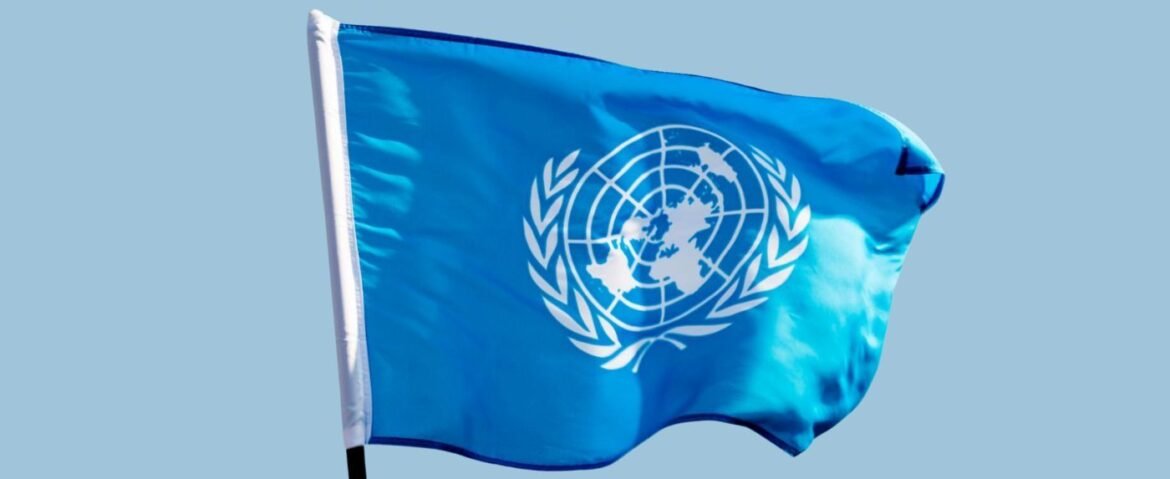The reasons why the UN supported the Trump Gaza peace plan
The fact that the Trump Gaza peace plan has been endorsed by the UN is an indication of a new twist in regional diplomacy. Months of talks were later supported by the Security Council to implement a setup to stabilise the Gaza Strip, whereby support mechanisms were put in place to aid in reconstruction efforts and reform security and transitional governance. Read the news on newstodate.co.uk.
The international consensus that has emerged based on this roadmap is an indication that there is a collective understanding that Gaza needs a concerted international effort to end protracted patterns of violence.
In addition, the plan also accumulated momentum as various diplomatic actors maintained that a single structure would decrease fragmentation and enhance humanitarian access. Sustainable cease-fire, a hostage release system, and a long-term demilitarisation process were also cited in the endorsement as necessary.
Having these factors in mind, the Trump Gaza peace plan was added to the list of priorities of the following round of regional interaction.
Major factors that determined the Trump Gaza peace plan structure
The Trump Gaza peace plan includes a systematic process of stabilisation of the territory and formation of a productive governing system.
It injects an international stabilisation force into Gaza to allow the ground to be secure. This force will underpin demilitarisation efforts, help in stopping the re-emergence of armed groups as well, and help humanitarian workers to work in safety.
Sir Keir Starmer to Raise Gaza Ceasefire in Meeting with Trump
The other key element is the formation of a transitional government of the Gaza Strip. This governmental establishment will manage governmental activities, provide civil reforms, and establish the environment in which the Palestinian government will operate in the long term.
The plan also focuses on a road to Palestinian statehood, connecting the prospects of political setups in the future to levels of security and institutional reforms.
The framework is also consistent with a larger U.S. diplomatic victory in the Middle East since a number of the regional players showed readiness and willingness to join or assist in the implementation stages.
Finally, the Trump Gaza peace plan provides a basis to have parallel political, human, and security tracks, which are meant to meet in the long run.
Regional involvement and troop support issues
Arab states emphasized troop donations
Governments in the region of the Arab have been actively debating the support of the stabilisation force. Although the states are not all equally prepared, some of them showed an interest in providing either personnel support or logistical support. They play a critical role in getting the stabilisation force to be legitimised locally and to possess enough diplomatic weight.
Moreover, such nations consider the move as an opportunity to influence the future of Gaza and avoid the vacuum that can be occupied by outside forces. Their participation also makes the multinational approach more credible.
Russia and China vote no on the UN resolution
The resolution was adopted with significant Russian and Chinese abstentions. Both, however, voiced their concerns regarding long-term politics, though neither of them disagreed with the initiative. They still refrained, and so the resolution was passed, showing a tacit acceptance of the stabilisation strategy.
This dynamic highlights the geopolitical intricacy of the situation in Gaza, in which great power politics mix with regional desires.
The Trump Gaza peace plan prioritizes a humanitarian one
The implementation is based on humanitarian issues. The plan is very keen on the provision of a consistent delivery of humanitarian assistance to Gaza. There is anticipated growth of aid corridors, medical access, and food distribution systems with better conditions under safer conditions, with the aid of the stabilisation force.
Also, a key priority is the reconstruction of the Gaza Strip. Decades of violence destroyed housing, utilities, and the infrastructure. The new structure has provisions of coordinated reconstruction, where the international donors are supposed to be of great importance.
Humanitarian organizations stressed that the process of recovery would not take place without materials, but also governance reform. This is quite consistent with the role of the transitional authority and the overall goals of the Trump Gaza peace plan.
Reform of governance and authority transitional problems
Palestinian Authority reform talks
The transitional government brings major changes in administration that are aimed at setting up the paths towards long-term stability. Such reforms are to restructure security services, deal with corruption issues, and enhance service delivery. The debate surrounding the role of the Palestinian Authority in the transition continues, with parties involved in it looking at the ways it could be integrated or be involved in the transition.
Also, the officials claim that governance restructuring is the key to finding an effective way to Palestinian statehood. Lack of significant reforms would probably halt political development.
The formation of the Board of Peace
A suggested Board of Peace to Gaza will help in overseeing the transition period. This board tries to liaise among donors on the international level, in the region, and with the local administrators, such that they are synchronized.
It will also be on how demilitarisation, milestones of reconstruction, and humanitarian access are complied with. The board will be expected to be in operation till a fully elected governing body can take power.
The components of security, cease-fire, and demilitarisation
Aspects of security are also the main focus of the plan. The cease-fire agreement connects the de-escalation to the hostage-release systems and provides both sides with incentives to comply. The security structure also encompasses the need to ensure that the routes of smuggling are not reopened, especially through small-boat infiltration and arms trafficking.
The stabilisation force will play a significant role in the process of demilitarisation as its responsibilities will include the control of the weapons flows and the avoidance of the militants reorganising. These missions are considered to be very risky, but the necessary measures are taken to ensure safe rebuilding.
In addition, the plan also recognises the challenge that has existed for a long time of narcotics trafficking and wider transnational criminal groups operating in the area. The joint security operation is meant to destroy these networks in the transitional period.
Diplomacy implications for the Middle East
The promotion of the Trump Gaza peace plan is a big diplomatic success of the United States in the Middle East. Leaders of the region held a wait-and-see attitude, citing the possibility of stabilisation of Gaza in a structured international mechanism.
The fact that the resolution was passed gives more strength to the U.S. position in the wider circles of diplomatic opinion and to its power to shape the future security discussions in the region. There has already been discussion on how the framework can inform the future negotiations between the neighboring countries.
Moreover, the approval will send a message to the international players that the future governance of Gaza will necessitate long-term international coordination. Such a change of collective responsibility may change the rules of diplomacy concerning the management of conflicts in the region.
Problems of implementation and future opportunities
The process will have to be closely coordinated on the military, humanitarian, and political lines. The stabilisation force should create safe areas, defend reconstruction areas, and facilitate safe humanitarian access.
To avoid gaps in governance, the transitional government should establish a sense of trust and provide the necessary services within the shortest time possible.
In the meantime, donor nations need to match fund allocation with the reconstruction schedules to eliminate the delays that have slowed down recovery efforts in the area.
However, despite the difficulties, several observers think that the new framework will be the most obvious roadmap in years. It is more integrated than its predecessors because it combines governance reform, humanitarian relief, and security restructuring.
In case of further development, the last phases of the plan can consolidate the statehood of the region and contribute to the expansion of further debates on the topic of statehood and peace in the long term.
Conclusion
The support of the Trump Gaza peace plan by the UN is a major move in stabilising the Gaza Strip and constructing a new regional paradigm.
The combination of a stabilisation force, governance reforms, humanitarian expansion, and cease-fire mechanisms offered in the plan is a structured way to avert and restore the necessary services as well as minimise the risk of conflict.
The initiative has attracted widespread diplomatic support, with the regional states thinking about contributing troops, and world powers permitting the resolution to go through.
There are still obstacles, especially in the areas of reconstruction, demilitarisation, and political reform, but the framework presents the most detailed blueprint in years.
The international cooperation will prove essential as long as the implementation process helps to avoid the recurrence of violence and facilitates a plausible transition.
Finally, the plan will be successful because of the long-term dedication, coherent leadership, and proper work of the newly established governing and security systems.
FAQs
- What is the Trump Gaza peace plan supposed to do?
It focuses on stabilising Gaza by security, governance reforms, humanitarian expansions, and a formalised way of long-term development politics.
- Will an international stabilisation force be introduced in Gaza?
Yes, there will be a multinational force, which will ensure the territory, demilitarisation, and facilitate the safe conduct of humanitarian activities.
- What is the plan in terms of reconstruction in Gaza?
It proposes a coordinated program of rebuilding financed by international donors with the priorities on housing, utilities, and public infrastructure.
- What place will regional Arab states play?
Some of the regional governments are deliberating on troop or logistical support to enhance the stabilisation mission and have a regional participation.
- Does the resolution contain provisions on the Palestinian statehood?
Yes, the framework defines a reform-oriented way of passage linked to the enhancement of governance and the level of security.


